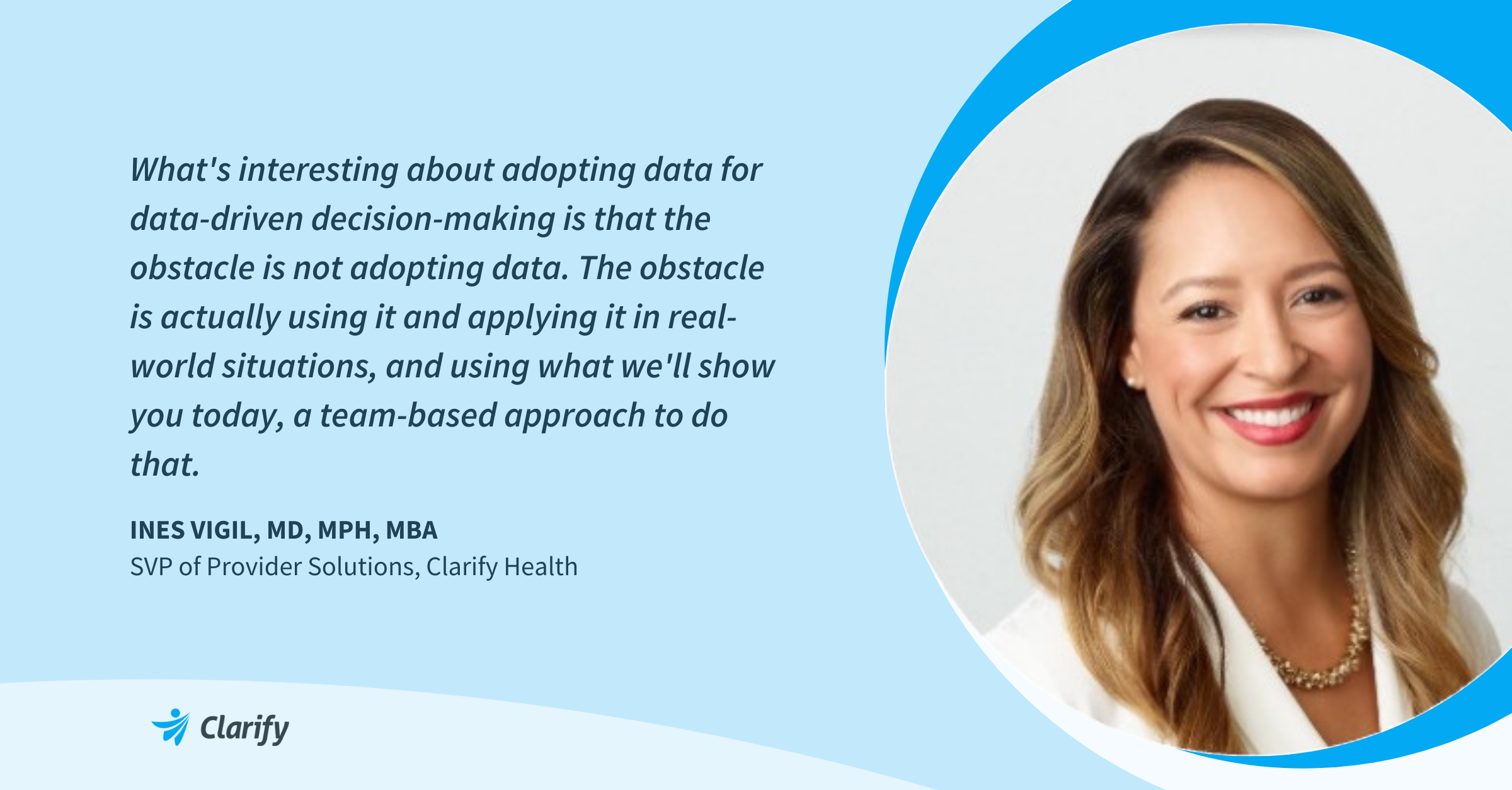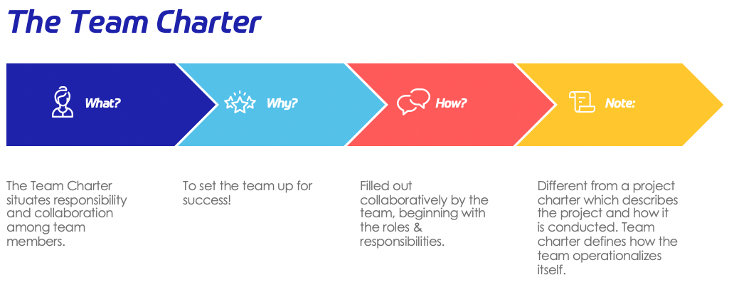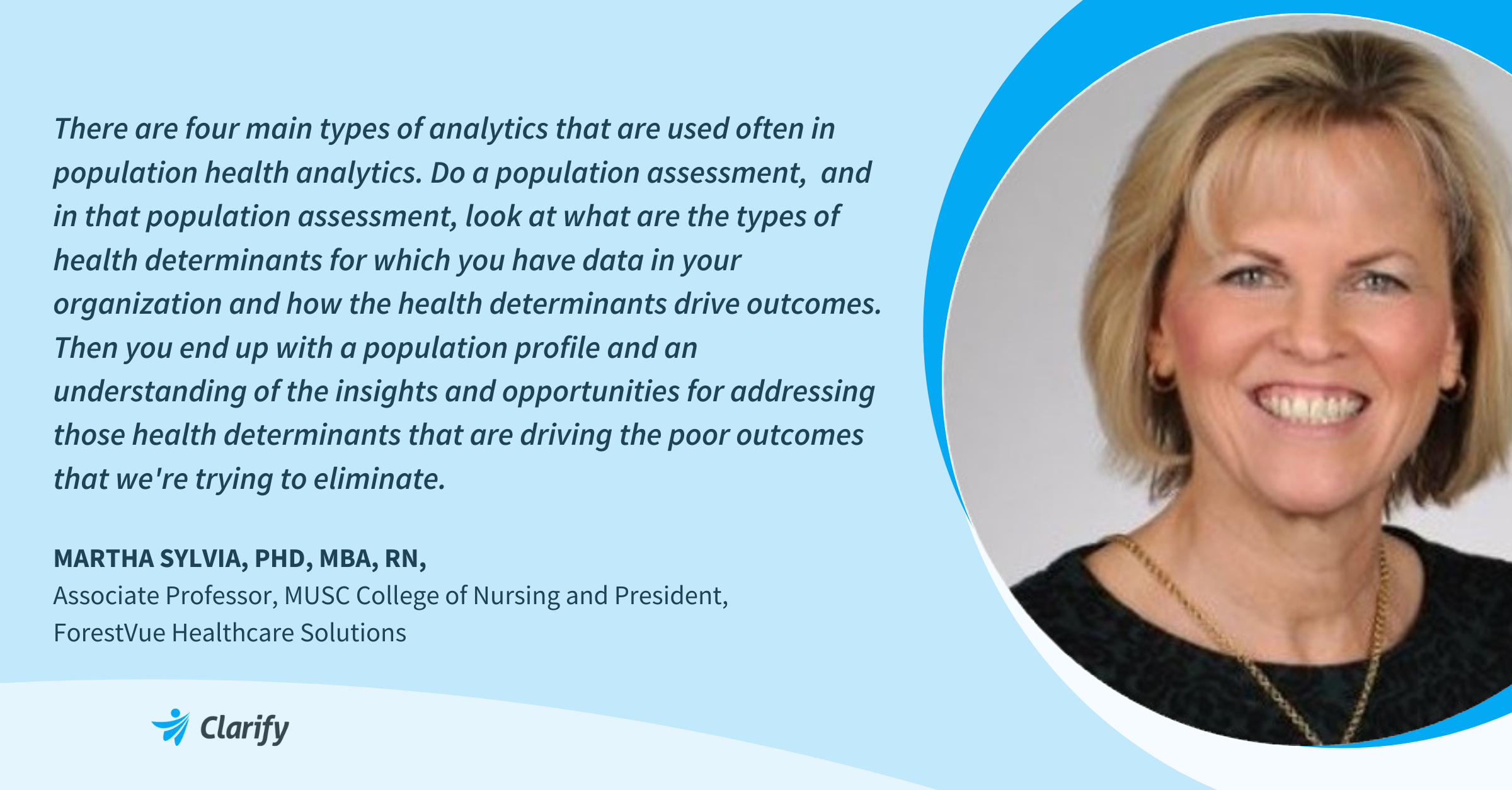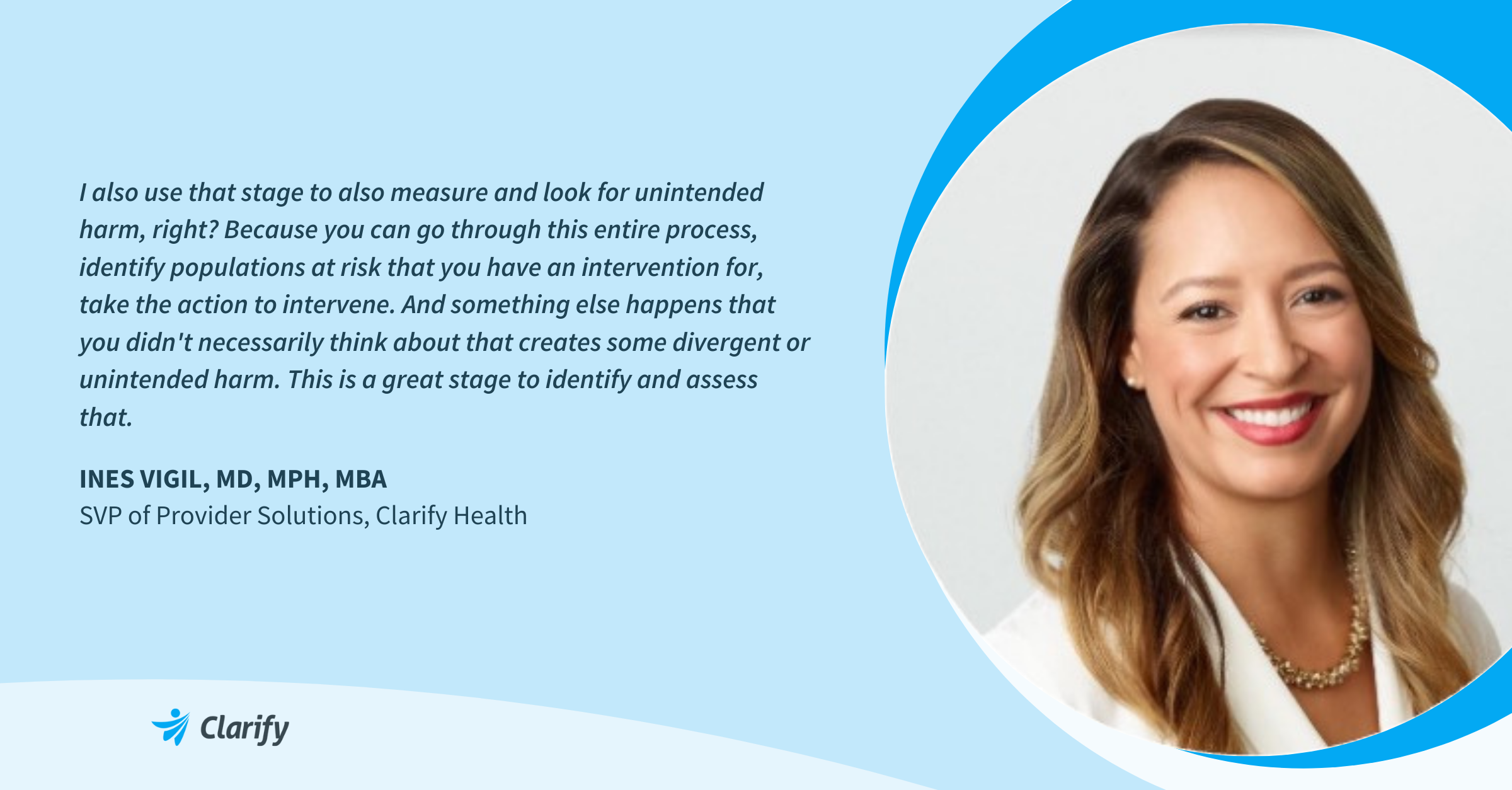Population health management is best supported by a data-driven approach with a structured analytics process driven by skilled and competent healthcare leaders and clinicians. Reports estimate that the healthcare analytics market size is expected to grow to $75.1 billion by 2026. Although there are many analytical tools for population health management, healthcare organizations face significant challenges in leveraging them. One major barrier that impedes healthcare analytics adoption is a lack of data-driven culture and understanding of how analytics can be used and applied for population health. Dr. Ines Vigil, MD, MPH, MBA, GM and SVP of Provider Solutions, Clarify Health, and Dr. Martha Sylvia, PhD, MBA, RN, Associate Professor, Medical University of South Carolina College of Nursing and President, ForestVue Healthcare Solutions, co-authored “Population Health Analytics,” a “how-to-guide” that prepares the healthcare workforce on using population health management software to improve health outcomes. The co-authors of “Population Health Analytics” gave an instructional presentation named: The Interdisciplinary Population Health Analytics Workforce. The presentation was lauded for its instructional merit, and HIMSS designated it a TIGER (Technology Informatics Guiding Education Reform) session. The co-authors delivered critical information on how to develop skills, knowledge, and competencies needed to leverage population health analytics. Here are the top takeaways from their presentation. Healthcare analytics can help organizations identify cost-saving opportunities, increase efficiency, and better allocate resources for population health management. However, clinical, analytical, and operational teams first need training on how to apply and derive value from insights. The co-authors suggest that it’s important that organizations assess their current workforce to understand the technology, training, and analytical toolsets they will need. Dr. Vigil explained that the four key areas to assess are: people, processes, culture, and technology. When building a population health management team, organizations should consider their workforce’s experiences, skills, roles, and responsibilities. When assessing the processes in place, evaluate whether the current team structures and project management approaches can facilitate a high-performing population health management. Likewise, the culture, which includes strategy, prioritizations, and perspectives, must also be gauged. Team-based approaches to data require a workplace culture that cultivates and embraces collaboration amongst differing expertise working together toward population health management. According to the “Population Health Analytics” co-authors, forming an interdisciplinary team can help organizations derive greater value from insights. Dr. Vigil illustrated that interdisciplinary teams mean placing people with different expertise under a shared population health management framework. However, as outlined by Dr. Vigil, for these teams to be highly effective, they should “create a team charter that sets the direction for the way this interdisciplinary team will work together.” To create the charter, the team should convene to discuss and outlines their goals, principles, project approach, strengths, weaknesses, and core competencies, amongst other things. She explained: Dr. Sylvia and I have seen in practical use that teams that do this team charter process and apply it through the exercises get to result so much faster than teams that question it, maybe do it partway or don’t complete it.” There are a lot of healthcare analytics products, but it’s imperative to understand the needs of a measured population first to select the right one. Dr. Sylvia explained that interdisciplinary teams should conduct a population assessment that assesses health and social determinants. The population assessment should assess how social determinants of health (SDoH) are driving health outcomes. It should also assess whether the team has the right analytics toolkit to capture SDoH factors in the analysis. According to Dr. Sylvia, the team should also examine predictive models and question whether the produced insights are “able to find the people that are going to end up in those scenarios prior to it happening.” The co-authors stressed that regular monitoring must occur after stratifying, segmenting, and applying intervention to the measured population. During this stage, teams should assess whether the interventions are achieving the intended results. There should be established monitoring and outcome metric definitions and systematic processes for continuously optimizing the interventions. Dr. Sylvia explained that determining whether programs and interventions are running as expected can be done with analytical tools like statistical process control, identification of process, and outcome measures. Monitoring how interventions are impacting populations is critical in preventing unintended consequences and worsening disparities. The co-authors also shared a case study on how a midwestern hospital was able to use the methods and approaches outlined in “Population Health Analytics” to identify patient populations with greater post-acute care needs and risks. The organization was described as having a “fantastic group of talent,” but people operated in silos, with each building their own predictive analytics models. They used the following approach: Dr. Sylvia is currently an Associate Professor at the Medical University of South Carolina College of Nursing who has nursing experience in acute and primary care settings. She previously served as director of population health analytics at the Medical University of South Carolina and Johns Hopkins Healthcare. Dr. Sylvia is an expert on evidence-based practice, clinical informatics, and population health management. She holds a PhD and MSN/MBA from the Johns Hopkins University School of Nursing, and the Carey School of Business. Dr. Vigil is the General Manager & SVP of Provider Solutions at Clarify Health. She is a fellow of the American College of Preventative Medicine (ACPM) with over 16 years of experience in clinical practice transformation, analytics, informatics, and value-based care delivery. Dr. Vigil holds an MD from the University of New Mexico School of Medicine, an MPH from the John Hopkins Bloomberg School of Public Health, and an MBA from the Carey Business School. Get a copy of the “Population Health Analytics” textbook Working with an established analytics partner, like Clarify Health, can equip organizations with the analytical tools and team to drive success and population health outcomes. Learn why Clarify was lauded by Frost & Sullivan for having the leading population health management (PHM) analytics solution and with comprehensive precise SDoH insights.Understanding of how analytics can be used and applied for successful population health management

Organizations should assess their workforce, technology, and analytic toolsets
Form an interdisciplinary team for population health management

Conduct a population assessment that identifies the needs of the measured population

Teams must regularly monitor interventions to prevent unintended consequences

Case study: Applying the ‘Population Health Analytics’ approach to gain key Population health insights
About the Authors of ‘Population Health Analytics’
- Author Details





